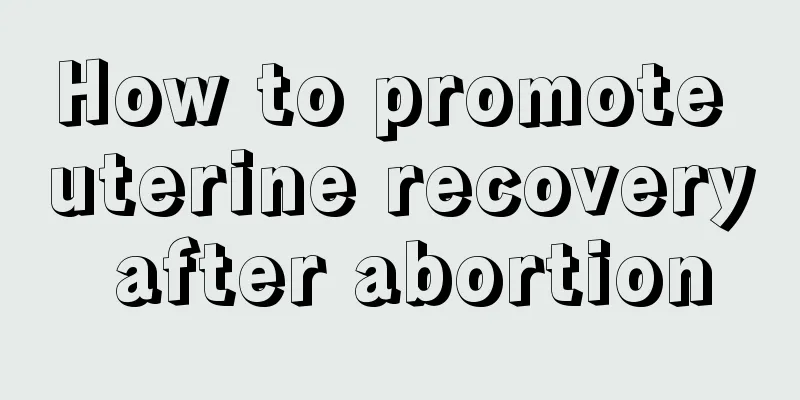How to promote uterine recovery after abortion

|
As we all know, abortion is a relatively common method of abortion. If a female friend has an unexpected pregnancy, abortion is a very good choice. Although abortion is a way to deal with unwanted pregnancy, it causes great harm to the human body. So, how to promote uterine repair after abortion? Ways to promote uterine repair after abortion: 1. After abortion, good uterine contractions will promote uterine repair, reduce bleeding, and close the open blood vessels in the uterine wall immediately. Massage is an effective and simple method. You can massage the uterus under the guidance of a doctor. 2. In clinical medicine, doctors will prescribe drugs that promote blood circulation, remove blood stasis, and promote excretion, as well as drugs that promote uterine repair. 3. Pay attention to rest after the operation and refrain from sexual intercourse to prevent infection and promote uterine repair. Under normal circumstances, within 7 days after abortion, if vaginal bleeding has stopped, there is no lower abdominal pain, and no abnormal secretions, it can indicate that the uterus has repaired normally. It takes about ten days to restore to normal physiology after abortion, so it is best to rest in bed within ten days and increase nutrition. In addition, you need to have another physical examination after the abortion to understand your physical condition in time. On the 10th day after the abortion, you must go to the hospital for a B-ultrasound examination to see if there is any residue in the uterus and whether the uterus is recovering normally. In addition, within one month after the abortion, try not to have sex to prevent pathogens from invading and causing infection. Is abortion dangerous? 1. Irregular menstruation and infertility Generally, women's menstrual flow is similar every month. If the amount varies too much, it is likely due to endocrine imbalance, causing the level of estrogen metabolism in the uterus and ovaries to be too high or too low. Irregular menstruation and amenorrhea are also usually related to endocrine imbalance. Some women have been married for many years and have a normal sexual life, but they have never gotten pregnant. 2. Gynecological diseases Women in menopause often become more irritable, have drastic changes in their mood, sweat, and have their temper affected. This may be caused by a decrease in women's endocrine function. Gynecological endocrine diseases are very common. Endometriosis, irregular menstruation, dysmenorrhea, and irregular menstruation are all gynecological endocrine diseases. |
<<: Pictures of warts on breasts
>>: Abdominal pain ten days after abortion
Recommend
What causes vaginal pain during intercourse?
Sexual intercourse should be a happy thing for co...
What happens if there are small lumps in the breast?
Women's breasts are very sensitive and very i...
Why do I have tingling pains in my breasts sometimes?
In life, many women suffer from breast hyperplasi...
This is something many people do at night, which is accelerating the aging of teeth! It may also make you uglier!
Many people have had the experience of hearing th...
Why is there pain under the right side of the chest?
We all know that women's breasts are the seco...
How is vaginal itching contagious?
One of the most common vaginal symptoms in women ...
Is it necessary for pregnant women to take linolenic acid?
We all know that during pregnancy and when prepar...
Omdia: MediaTek's 5G chip shipments reached 53 million in Q1 2024, a year-on-year increase of 52.7%
The latest report from research firm Omdia shows ...
What is the cause of bleeding during the 40th day of pregnancy?
Many pregnant mothers should be immersed in the h...
What should I do if I have breast pain during pregnancy? Introducing effective methods!
If a woman experiences breast pain after giving b...
Will eating too much solid calcium cause kidney stones? The main cause of kidney stones is...
Author: Li Jie, attending physician, Department o...
Spontaneous abortion, no menstruation for one month
Abortion is a relatively common phenomenon that p...
Why do I get chest pain when I'm angry?
Why does chest pain occur when you are angry? Som...
Psychological counseling during the epidemic
Due to the epidemic, primary school students are ...









